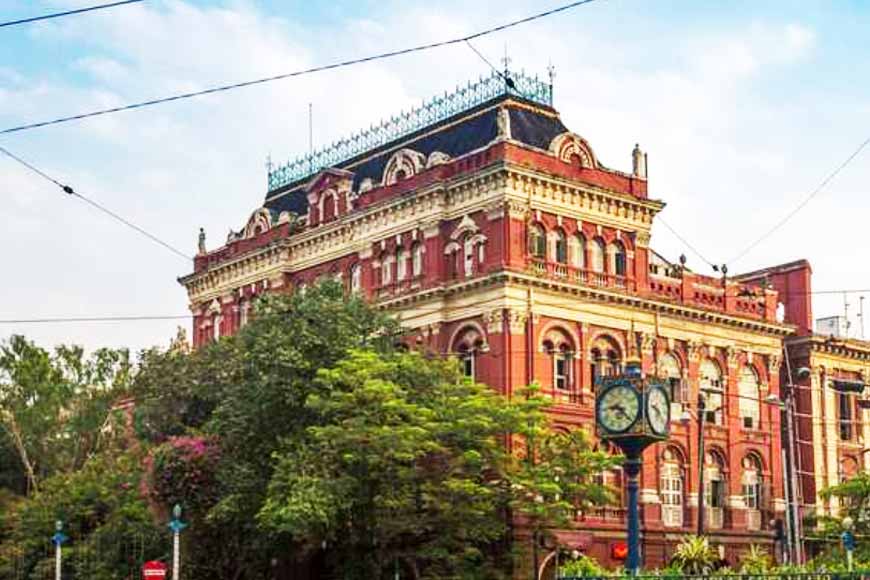Mahakaran Metro Station gets Heritage Gallery for Martyrs

For history buffs who love to unveil the past and explore hidden treasures, here’s time to rejoice. The Metro Rail authorities have decided to set up a heritage gallery at the Mahakaran Metro Station in the Dalhousie Square area, which will revolve around India’s freedom struggle and feature vignettes from several historical events. The Writers’ Building or Mahakaran, was a secretariat building of the Government of West Bengal. It is one of the many heritage buildings that bring out the essence of the British East India Company era. Stretched across Lal Dighi, a local water body in the B.B.D Bagh area, the Writers’ Building served as the office of the Chief Minister of West Bengal up until 2013.
Now plans are afoot to build a heritage gallery in the Mahakaran metro station premises itself. There could be no better place than the Mahakaran area which was the administrative nerve center of the city, the capital during British rule and witnessed direct action during the country’s freedom struggle. Youths fought fearlessly and laid down their lives for their motherland here. Important events of the freedom struggle will be highlighted to familiarize viewers with our history of strife against colonial rule. The entire station is being embellished with rare photographs and information on Benoy, Badal and Dinesh’s heroic deeds. This three-storey station is 21 meters deep, 206 meters long and 22 meters wide. The Heritage Gallery will be on the second floor of the station and once it is ready, the museum will be open to all for viewing.
It was the 8th of December 1930. The Writers’ Building was buzzing with activity as usual. The British officers, gentry, Bengali gentlemen and clerks, were doing their regular business. The calm December day was suddenly disrupted, and mayhem ensued. Three young men dressed in European attire came from the shadows and opened fire from their revolvers. They were after Col N S Simpson, IG Prison Calcutta.
‘Operation Freedom’ was launched in 1930 by Indian revolutionaries to protest against police repression in different jails in Bengal. In August 1930, they planned to execute Lowman, the Police Inspector General. Benoy Bose shot him at the Medical School Hospital in Dhaka, escaping to Kolkata soon after. Later, Bose along with his two comrades, Badal Gupta and Dinesh Gupta, decided to kill N. S. Simpson, as well as other eminent British government officials to strike terror in the heart of the Raj’s official circles. This was to be an attack on the Writers’ Building, the Secretariat, in the heart of Kolkata.
It was the 8th of December 1930. The Writers’ Building was buzzing with activity as usual. The British officers, gentry, Bengali gentlemen and clerks, were doing their regular business. The calm December day was suddenly disrupted, and mayhem ensued. Three young men dressed in European attire came from the shadows and opened fire from their revolvers. They were after Col N S Simpson, IG Prison Calcutta. The officer was known for his brutal oppression of political prisoners.
Soon, British police surrounded them, and a brief gun battle ensued between the three young revolutionaries and the cops. British officers including Twynam, Prentice and Nelson suffered grievous injuries during the shoot-out. Although the British managed to overpower the trio, the men refused to surrender. Badal Gupta immediately ingested potassium cyanide, while Benoy and Dinesh shot themselves point blank with their firearms. Benoy breathed his last in a hospital on December 13, 1930. Dinesh Gupta recovered and his trial was held. The judge ordered his execution and he was hanged. This epic battle will be featured in the gallery. Apart from that, rare coins and photographs will be on display accompanied by historical facts and anecdotes related to them. This section will be a treat for philatelists. A selection of photographs of the city’s heritage buildings will also be exhibited.
‘Operation Freedom’ was launched in 1930 by Indian revolutionaries to protest against police repression in different jails in Bengal. In August 1930, they planned to execute Lowman, the Police Inspector General. Benoy Bose shot him at the Medical School Hospital in Dhaka, escaping to Kolkata soon after. Later, Bose along with his two comrades, Badal Gupta and Dinesh Gupta, decided to kill N. S. Simpson, as well as other eminent British government officials to strike terror in the heart of the Raj’s official circles.
Every detail was planned meticulously and finally the construction of the project has been initiated at Mahakaran Station. The first floor of this station has been planned as a subway because traffic is very heavy on Hemanta Basu Sarani, the road running parallel to the Writers’ Building, at all hours of the day. Daily peak-hour traffic congestion is a frustrating experience for commuters. So, once the subway is opened to pedestrians, they will not be using road crossings and this will eliminate congestion substantially.
The gate opposite St. Andrews Church sidewalk near the Power Tools building will be used as a subway. So pedestrians will not need to cross Lalbazar Road from Writers’ Building. The second floor will be a paid zone. All arrangements related to station management including ticket counters will be located here. From there, one can approach the platform. This station is going to have an island platform.
In this case, both sides of the platform will be used for up and down trains. Provisions are being made for installing four escalators and two lifts in the station. Since it is a high security zone, there are five fire exits. According to a survey conducted by the Central expert committee, Rights, the station will carry around 30,000 passengers per hour. The entire station will be aesthetically adorned with murals tracing the rich and glorious history of the Writers Building. The heroic deeds of Benoy, Badal and Dinesh will be illustrated on the walls. In addition, myriad tales of the heritage buildings will be displayed throughout the station.











